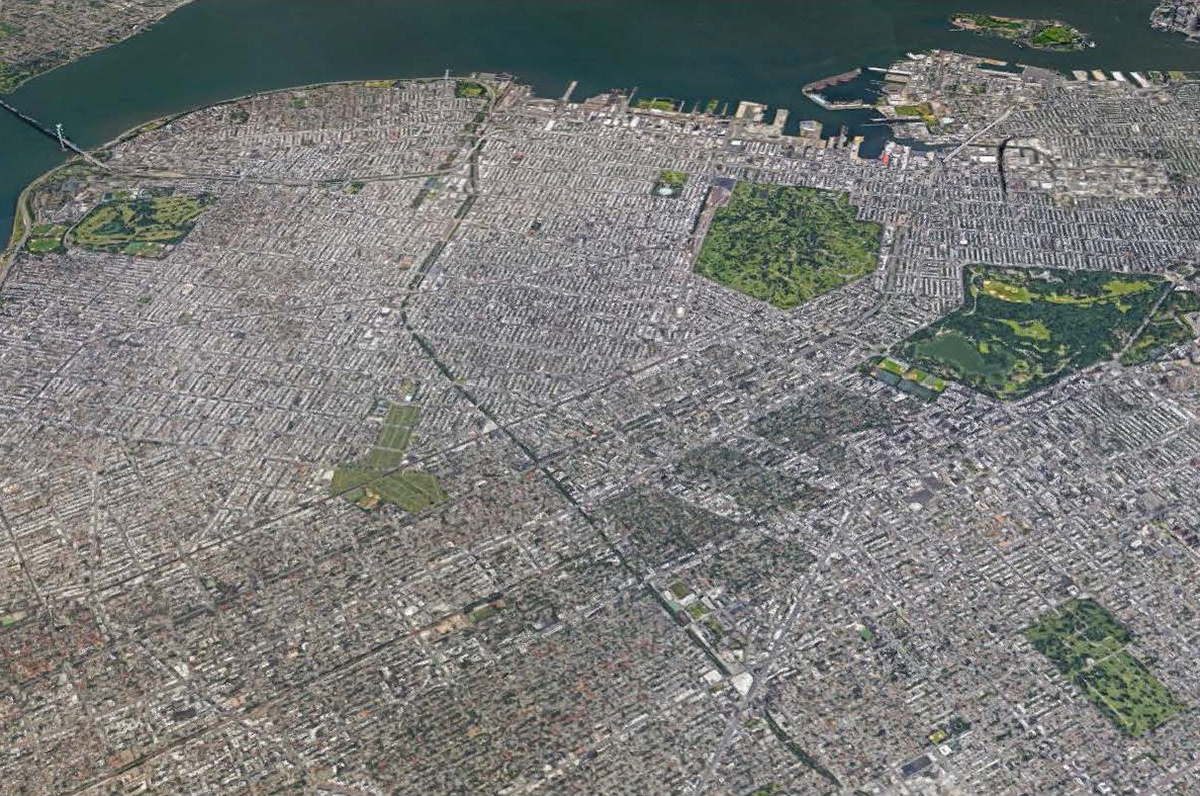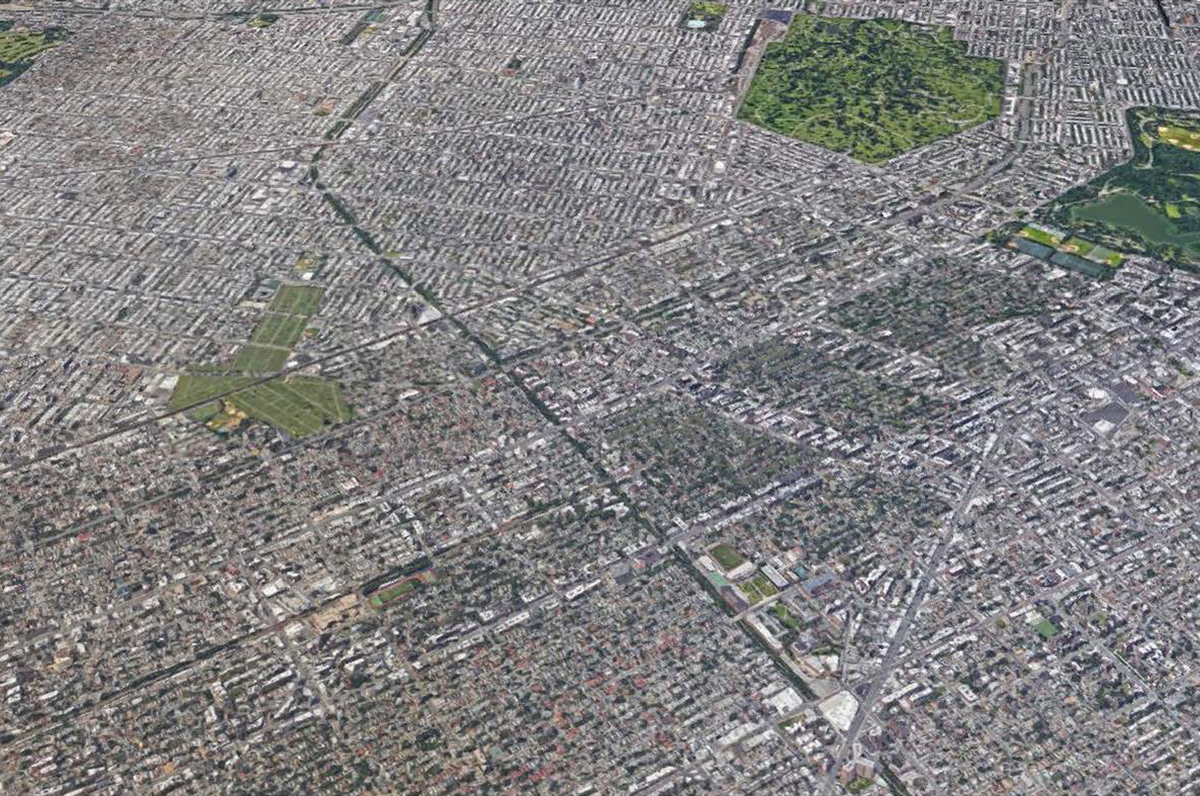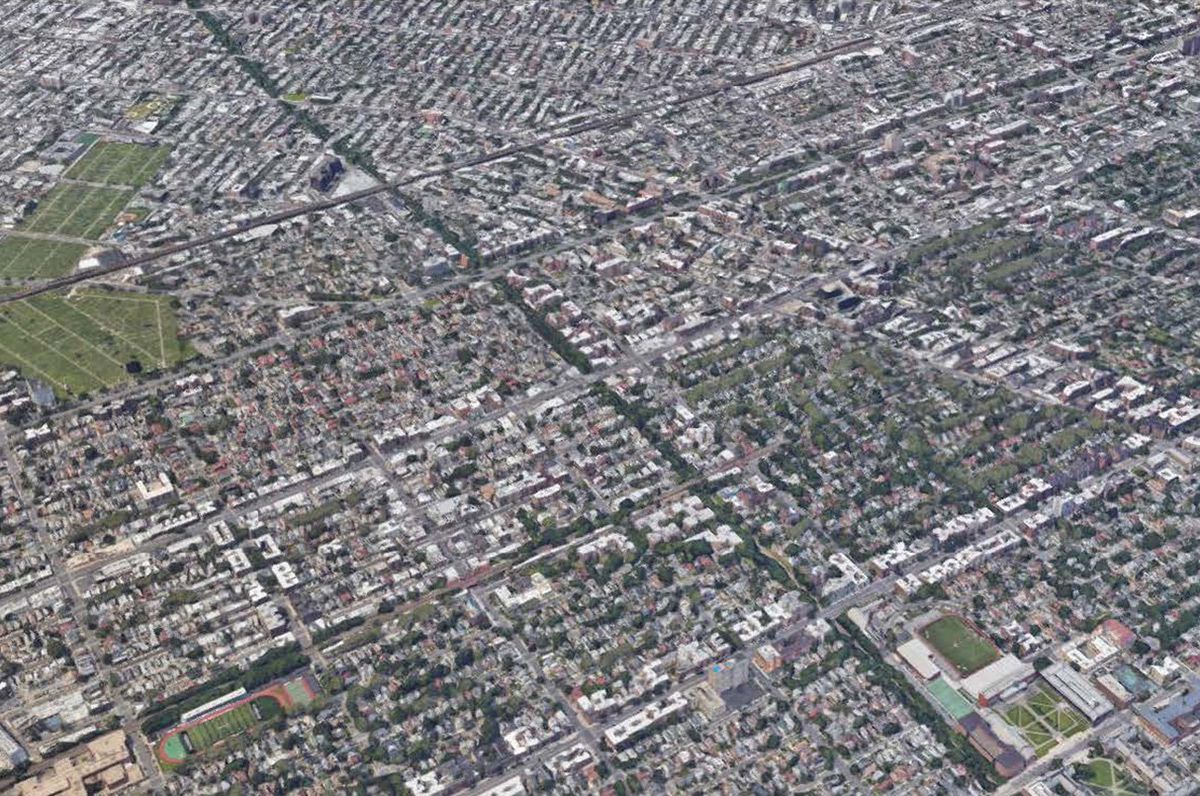"Rail City" draws attention to the importance of individual and idiosyncratic expression in the urban landscape and imagines an architecture where that continues to be possible. The project offers an armature, built on the foundations of the rail line, upon which people can create their own dwellings and their own architecture. The result will be inventive and expressive in ways we cannot predict. The imagined architecture is that of diverse dreams, aspirations and visions of future generations.






The South Brooklyn railroad has left a scar in the fabric of the city that interrupted the flow of traffic by severing most of the streets. For 100 years there has been a no-man's land running through the heart of Brooklyn. Improving the rail by building a combined freight and subway system addresses important urban issues, but creates an even greater challenge for the local neighborhood.

EXISTING PLAN

EXISTING SECTION

PROPOSED RECONNECTING STREETS

PROPOSED SECTION OF RAILWAY
Solution #1 Build the new freight and subway system completely underground, and reconnect the streets.

PROPOSED PLAN

PROPOSED CONSTRUCTED BUILDING SECTION

PROPOSED FINAL FORM
Solution # 2 Build a linear, mixed-use structure that utilizes the rail line as a foundation, consistent with sustainable urban development, creating equitable housing and work spaces with a continuous recreation / garden space on the roof.
The Winding Stairs, A Rooftop Folly & Christmas
The instinct to make our dwellings uniquely expressive of our needs, allegiances and aspirations is intrinsic to our humanity and written in the endlessly diverse architecture of human societies. That expressiveness has been both communal and individual, and varies from the richly articulated to the humble and modest. In contemporary America, however, particularly since WWII, economic and social pressures have worked to diminish, generally, the scope and quality of architectural expressiveness. The communal, particularly multi-family housing, has become anodyne and minimally expressive of the passing architectural fashions. However, the single family home, even if modest and originating from a builder's catalogue, is still the place where individual expression happens - the eccentric flower bed, the bizarre rooftop addition, the picket fence reminiscent of a by-gone era, the extravagant display of Christmas lights.
That is clearly evident in this South Brooklyn neighborhood, with its mixture of drab six-story apartment buildings and quiet streets of single family homes that, while modest, offer endless expression of individual choices and architectural decisions. Yet this neighborhood, and those like it, are easily taken for granted. And looking toward the future, they are at risk as the imperative to create high-density, urban housing in response to climate change continues to grow.
The Guggenheim, Jaipur & Flatbush
This project draws attention to the importance of individual and idiosyncratic expression in the urban landscape and imagines an architecture where that continues to be possible. Building high-density housing above a major rail/subway infrastructure is basically an ecological imperative, however, the approach here is to utilize that development as an opportunity for individual architectural expressiveness. Over a time frame that could be decades, or generations, the project offers an armature, built on the foundations of the rail line, upon which people can create their own dwellings and their own architecture. Growing organically over time, the result will be inventive and expressive in ways we cannot predict. The images that follow are not, in fact, an architectural proposal, but rather imagined examples of the diverse dreams, aspirations and visions of future generations.
To avoid a stultifying, minimally expressive urban environment, as we move toward environmental sustainability, we must find ways for the innate human talent for individual creativity to make its mark.
"Cities have the capability of providing something for everybody, only because, and only when, they are created by everybody."
Jane Jacobs
Jane Jacobs